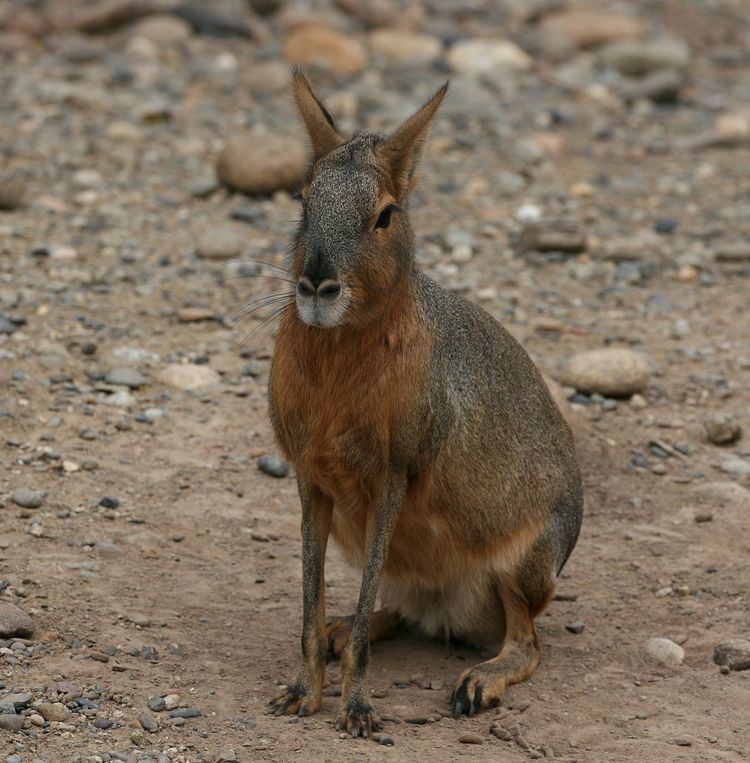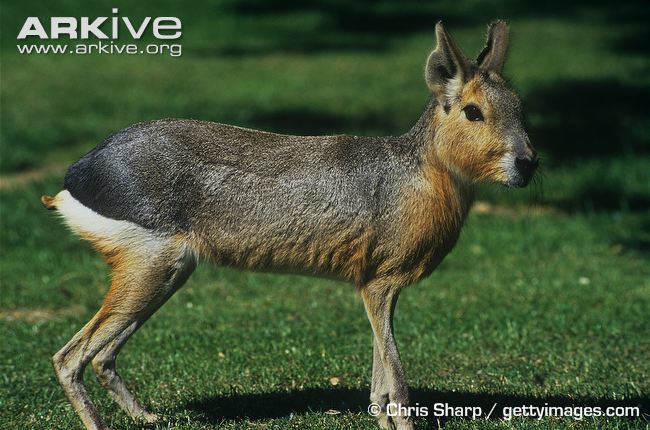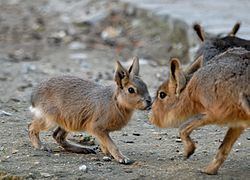Scientific name Dolichotis Rank Genus | Phylum Chordata Higher classification Dolichotinae | |
 | ||
Subfamily DolichotinaePocock, 1922 Lower classifications Patagonian mara, Chacoan mara | ||
The maras (Dolichotis) are a genus of the cavy family. They are the sole representatives of the subfamily Dolichotinae. These large relatives of guinea pigs are common in the Patagonian steppes of Argentina, but also live in Paraguay and elsewhere in South America. Maras are the fourth-largest rodent in the world, after capybaras, beavers, and porcupines, reaching about 45 cm (18 in) in height.
Contents

Two species of maras are recognised, the Patagonian mara (Dolichotis patagonum), and the Chacoan mara (Dolichotis salinicola).
Dolichotis means ‘long-earred’ (from dolicho- ‘long’ + ōt- ‘ear’) in Ancient Greek.
Description

Maras have stocky bodies, three sharp-clawed digits on the hind feet, and four digits of the fore feet. Maras have been described as resembling long-legged rabbits. Patagonian maras can run at speeds up to 29 km (18 mi) per hour. They can weigh over 11 kg (24 lb) in adulthood.

Most maras have brown heads and bodies, dark (almost black) rumps with a white fringe around the base, and white bellies.

Maras may amble, hop in a rabbit-like fashion, gallop, or bounce on all fours. They have been known to leap up to 6 ft (1.8 m).
Maras mate for life, and may have from one to three offspring each year. Mara babies are very well-developed, and can start grazing within 24 hours. They use a creche system, where one pair of adults keeps watch for all the young in the creche. If they spot danger, the young rush below ground into a burrow, and the adults are left to run for it.
Interaction with humans
Patagonian maras are often kept in zoos or as pets, and are also known as "Patagonian cavies" or "Patagonian hares". They can be quite social with humans if raised with human interaction from a young age, though they avoid people in the wild. Maras may even change their habits from coming out in day to becoming nocturnal, simply to avoid social interaction.
